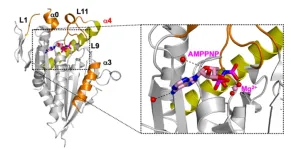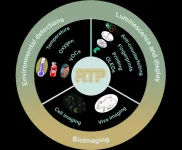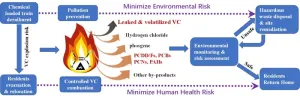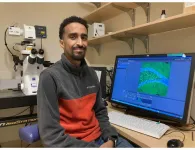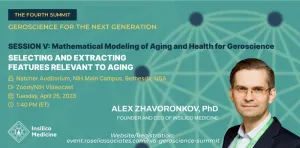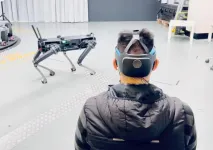(Press-News.org) New Orleans, LA -- LSU Health New Orleans Louisiana Tumor Registry (LTR) has published the sixth report of statewide cancer incidence rates by census tract. The publication, which reports 2010-2019 combined cancer incidence data, found that 81% of the census tracts in Louisiana met publication criteria for all cancers combined. For specific cancer types, fewer census tracts met the criteria. For the Louisiana census tracts meeting the criteria, the incidence rates for all cancers combined and for specific cancer types were compared with the corresponding rates for the entire state. The numbers of census tracts with statistically significantly higher incidence rates as compared to the rates for Louisiana varied by cancer type. Cancer Incidence in Louisiana by Census Tract 2010-2019 is available online here.
The release of cancer incidence data is governed by the federal patient privacy law and federal standards for producing valid data. To protect patient confidentiality, HIPAA prohibits publication of health information by geographic area when the underlying population is 20,000 or less. The United States Cancer Statistics standards for generating reliable cancer incidence rates require case counts of 16 or more to report. To increase the number of census tracts meeting the publication criteria, LTR combined 10 years of data – 2010-2019.
The cancer incidence rate is the number of newly diagnosed cancer cases in a specified population during the specified years, usually expressed as the number of cancers per 100,000 population.
Census tracts are small, relatively permanent statistical subdivisions of a parish. Census tracts generally have a population size between 1,200 and 8,000 people. Of the 1,148 census tracts in Louisiana, 933 met the publication criteria for all cancers combined. For specific cancer types, fewer census tracts met the criteria.
For all cancers combined, of the 933 census tracts meeting the publication criteria when 2010-2019 data were combined, 124 census tracts from 38 parishes had statistically significantly higher incidence rates as compared with Louisiana, and 107 census tracts had lower incidence rates.
The census tract with the highest incidence rate that is statistically significant for all cancers combined in Louisiana is 22071013400, which is in the Central Business District/Warehouse District in Orleans Parish. The rate is 893.5 per 100,000. There are 26.0 cases on average per year among a population of 2,524.
The second statistically significantly higher rate is also in Orleans Parish – the Desire Neighborhood (22071013700). The rate is 738.8 per 100,000. There are 14.8 cases on average per year among a population of 2,200.
The third statistically significantly higher rate is found in Lafourche Parish in the Brule area near the town of Thibodaux (22057020702). The rate is 731.8 per 100,000. There are 19.5 cases on average per year among a population of 3,172.
There are census tracts with a statistically higher cancer incidence rate than Louisiana for all cancers combined in Acadia, Ascension, Bienville, Bossier, Caddo, Calcasieu, Catahoula, De Soto, East Baton Rouge, East Carroll, East Feliciana, Iberia, Iberville, Jefferson, Lafayette, Lafourche, Livingston, Morehouse, Natchitoches, Orleans, Ouachita, Rapides, Richland, St. Bernard, St. Charles, St. James, St. Landry, St. Martin, St. Mary, St. Tammany, Tangipahoa, Terrebonne, Vermillion, Vernon, Washington, Webster, and West Baton Rouge parishes.
Results for the most common specific cancer types include:
Prostate Cancer: Of the 477 census tracts meeting the publication criteria, 45 census tracts in 19 parishes had statistically significantly higher incidence rates than Louisiana, and 42 had lower rates.
Cancers of the Lung and Bronchus: Of the 849 census tracts meeting the publication criteria, 80 census tracts in 34 parishes had statistically significantly higher incidence rates than Louisiana, and 67 census tracts had lower rates.
Female Breast Cancer: Of the 520 census tracts meeting the publication criteria, 26 census tracts in 11 parishes had statistically significantly higher incidence rates than Louisiana, and 18 census tracts had lower rates.
Colorectal Cancer: Of the 706 census tracts meeting the publication criteria, 49 census tracts in 27 parishes had statistically significantly higher incidence rates than Louisiana, and 19 census tracts had lower rates.
Cancers of the Kidney and Renal Pelvis: Of the 224 census tracts meeting the publication criteria, 27 census tracts in 22 parishes had statistically significantly higher incidence rates than Louisiana, and none had lower rates.
Findings for other cancer types include:
Non-Hodgkin lymphoma: Of the 138 census tracts meeting the publication criteria, 21 census tracts in 10 parishes had statistically significantly higher incidence rates than Louisiana, and none had lower rates.
Urinary Bladder Cancer: Of the 141 census tracts meeting the publication criteria, 32 census tracts in 19 parishes had statistically significantly higher incidence rates than Louisiana, and none had lower rates.
Melanoma of the Skin: Of the 141 census tracts meeting the publication criteria, 75 census tracts in 17 parishes had statistically significantly higher incidence rates than Louisiana, and none had lower rates.
Pancreas: Of the 36 census tracts meeting the publication criteria, 9 census tracts in 6 parishes had statistically significantly higher incidence rates than Louisiana, and none had lower rates.
Leukemia: Of the 47 census tracts meeting the publication criteria, 9 census tracts in 7 parishes had statistically significantly higher incidence rates than Louisiana, and none had lower rates.
Oral Cavity & Pharynx: Of the 35 census tracts meeting the publication criteria, 13 census tracts in 11 parishes had statistically significantly higher incidence rates than Louisiana, and none had lower rates.
Thyroid: Of the 55 census tracts meeting the publication criteria, 19 census tracts in 13 parishes had statistically significantly higher incidence rates than Louisiana, and none had lower rates.
Corpus Uterus: Of the 6 census tracts meeting the publication criteria, 1 census tract in 1 parish had a statistically significantly higher incidence rate than Louisiana, and none had lower rates.
Liver and Intrahepatic Bile Duct: Of the 10 census tracts meeting the publication criteria, 9 census tracts in 7 parishes had statistically significantly higher incidence rates than Louisiana, and none had lower rates.
Myeloma: 1 census tract meeting the publication criteria in 1 parish had a statistically significantly higher incidence rate than Louisiana.
“Cancer remains the second leading cause of death in the United States even during the COVID-19 pandemic,” notes Xiao-Cheng Wu, MD, MPH, Professor and Director of the Louisiana Tumor Registry at LSU Health New Orleans School of Public Health. “According to the National Center for Health Statistics data, the number of cancer deaths surpassed the number of COVID-19 deaths in both 2020 and 2021. The timely publication of this cancer report underscores our unwavering commitment to providing high-quality and timely cancer data for cancer control, prevention and cancer research. We would like to extend a well-deserved shout-out to everyone at the hospital and regional registries in Louisiana. Their hard work made this report possible.”
LSU Health New Orleans Louisiana Tumor Registry is a statewide population-based cancer registry authorized by law to collect data on all reportable cancer cases occurring among Louisiana residents. A registry serves as an official count of a specific thing and its associated identifying information.
A cancer registry systematically collects data on reportable cancers, which includes patient demographics, cancer type, stage at diagnosis, and the first course of treatment, as well as survival. This information is used to answer questions such as: Are more or fewer people getting colorectal cancer from one reporting period to the next?
LTR's job is to collect high-quality cancer data, which guide and support cancer prevention and control activities, as well as many other cancer-related programs and research. Policymakers, state health departments, cancer control programs and other qualified health professionals decide if further action is warranted based on the LTR data.
LTR's excellence is attested by the National Cancer Institute (NCI), the Centers for Disease Control and Prevention (CDC), and the North American Association of Central Cancer Registries (NAACCR). LTR consistently achieves the benchmark of 98% case completeness set forth by NCI and has received first place awards for the quality and completeness of its data from NCI’s Surveillance, Epidemiology, and End Results (SEER) program for the past 13 consecutive years. One of only 22 cancer registries in the country comprising NCI’s SEER Program, LTR is considered to be one of the leading cancer registries in the nation.
_____________________________________________________________________________________
LSU Health Sciences Center New Orleans educates Louisiana's health care professionals. The state's flagship health sciences university, LSU Health New Orleans includes a School of Medicine with campuses in Baton Rouge and Lafayette, the state's only School of Dentistry, Louisiana's only public School of Public Health, and Schools of Allied Health Professions, Nursing, and Graduate Studies. LSU Health New Orleans faculty take care of patients in public and private hospitals and clinics throughout the region. In the vanguard of biosciences research in a number of areas in a worldwide arena, the LSU Health New Orleans research enterprise generates jobs and enormous economic impact. LSU Health New Orleans faculty have made lifesaving discoveries and continue to work to prevent, advance treatment, or cure disease. To learn more, visit http://www.lsuhsc.edu, http://www.twitter.com/LSUHealthNO, or http://www.facebook.com/LSUHSC.
# # #
END
LSU Health New Orleans LA Tumor Registry releases 6th Census Tract Cancer Incidence Report
2023-04-03
ELSE PRESS RELEASES FROM THIS DATE:
Anticancer drugs with fewer side-effects: scientists decode the crystal structure of a key cell cycle protein
2023-04-03
Anticancer drugs are pivotal to cancer treatment, but their toxicity may not always be limited to cancer cells, resulting in harmful side-effects. To develop anticancer therapies that have fewer adverse effects on patients, scientists are now focusing on molecules that are less toxic to cells. One such group of drugs is the "kinesin inhibitors." These inhibitors prevent cancer progression by explicitly targeting kinesin motor proteins, which are required for the division of cancer cells. Centromere-associated protein E (CENP-E), a member of the kinesin motor protein, is a promising target for inhibitor therapy, as it is essential for tumor cell replication. However, determining the ...
Researchers reviewed recent progress of organic room-temperature phosphorescent materials towards application
2023-04-03
Organic materials with room-temperature phosphorescence (RTP) emission have attracted extensive attention due to extraordinary properties including long lifetime, large Stokes shift, stimuli-responsiveness, and so on, and show bright prospects in broad fields. However, the energy of the excited state of organic phosphors is easily consumed through thermal radiation and collision deactivation. Therefore, numerous design strategies such as creating a rigid environment through crystallization and supramolecular assembly are employed to improve the luminescent characteristics of RTP materials by restricting nonradiative transition, enhancing intersystem crossing, and so forth. A team ...
American Kidney Fund awards fellowships to researchers focused on barriers to home dialysis and living donor transplants among youth; COVID-19 vaccine booster disparities in the dialysis community
2023-04-03
ROCKVILLE, Md. (April 3, 2023)— Today the American Kidney Fund (AKF) announced the recipients of this year’s Clinical Scientist in Nephrology (CSN) fellowship program, in which promising researchers work to improve the quality of care for people living with kidney disease and promote clinical research in nephrology. Dr. Alexandra Bicki, a pediatric nephrology fellow at the University of California, San Francisco, will be working on identifying facilitators and barriers to home dialysis and living kidney donor transplantation among adolescents and young adults, while Dr. Nivetha Subramanian, a nephrology fellow at ...
SwRI expands hydrogen energy research capabilities with new liquid hydrogen storage tank
2023-04-03
SAN ANTONIO – April 3, 2023 — Southwest Research Institute has installed a large-capacity liquid hydrogen tank to expand its advanced hydrogen energy research initiatives. Leveraging the tank’s capabilities alongside a multidisciplinary research approach, SwRI endeavors to explore technology opportunities and address obstacles related to hydrogen energy research and development.
The SwRI liquid hydrogen storage tank has a capacity of 17,000 gallons and will provide the Institute with a cost-effective, reliable supply of hydrogen ...
International research team analyzes February 2023 Ohio train derailment
2023-04-03
On February 3, 2023, a train derailed in the United States near East Palestine, Ohio, leading to the combustion of vinyl chloride. Following that accident, an international team of researchers undertook an in-depth analysis of the environmental consequences of the accident.
Their analysis is published in the journal Frontiers of Environmental Science & Engineering on March 15, 2023.
In their analysis, the team examined a series of questions related to the environmental risk and management of the chemical accident. “We emphasized that it is unscientific to overestimate or underestimate the environmental ...
Using artificial intelligence to design innovative materials
2023-04-03
Advanced materials are urgently needed for everyday life, be it in high technology, mobility, infrastructure, green energy or medicine. However, traditional ways of discovering and exploring new materials encounter limits due to the complexity of chemical compositions, structures and targeted properties. Moreover, new materials should not only enable novel applications, but also include sustainable ways of producing, using and recycling them. Researchers from the Max-Planck-Institut für Eisenforschung (MPIE) review the status of physics-based modelling ...
Jet lag’s harmful health impacts found to be caused by biological clock misalignment
2023-04-03
New research at the University of Massachusetts Amherst zeroes in on the root cause of adverse health effects from disruption of the body’s circadian rhythms, which typically occurs from jet lag and rotating work shifts.
The research, published in the journal eNeuro, also shows that the circadian clock gene Cryptochrome 1 (Cry 1) regulates adult neurogenesis – the ongoing formation of neurons in the brain’s hippocampus. Adult neurogenesis supports learning and memory, and its disruption has been linked to dementia and mental illness.
“Circadian disruption impacts a lot of things,” says lead author Michael Seifu Bahiru, a Ph.D. candidate in the ...
Using AI to address aging and disease: Insilico Medicine’s Alex Zhavoronkov, PhD presents at the Geroscience Summit
2023-04-03
Insilico Medicine founder and CEO Alex Zhavoronkov, PhD, a pioneer in generative AI for drug discovery and in uncovering dual pathways for aging and disease, will present at The Fourth Summit: Geroscience for the Next Generation organized by the Geroscience Interest Group of the National Institutes of Health (NIH) and the U.S. Department of Health and Human Services, happening April 24-26 at the NIH Main Campus in Bethesda, Maryland. Zhavoronkov will speak April 25, 1:40pm ET as part of the session on Mathematical Modeling of Aging and Health for Geroscience on “Selecting and Extracting Features Relevant to ...
A sensor that might someday enable ‘mind-controlled’ robots
2023-04-03
It sounds like something from science fiction: Don a specialized, electronic headband and control a robot using your mind. But now, recent research published in ACS Applied Nano Materials has taken a step toward making this a reality. By designing a special, 3D-patterned structure that doesn’t rely on sticky conductive gels, the team has created “dry” sensors that can measure the brain’s electrical activity, even amidst hair and the bumps and curves of the head.
Physicians monitor electrical signals ...
Older adults perceive artificial intelligence as more human-like than younger adults do
2023-04-03
Older adults perceive artificial intelligence as more human-like than younger adults do
Toronto, April 3, 2023 – Artificial intelligence (AI) is increasingly present in all of our lives, from newer offerings like ChatGPT to more established voice systems such as automated phone services, self-checkouts, Apple’s Siri and Amazon’s Alexa. While these technologies largely benefit us, they can also be used in adverse ways – for instance, in fraudulent or scam calls – making it important for us to be able to identify them.
According to a recent Baycrest study, older adults appear to be less able to distinguish ...

